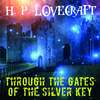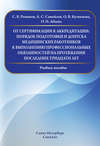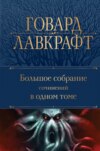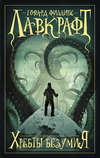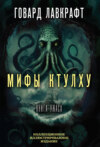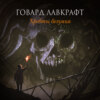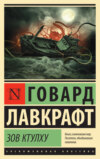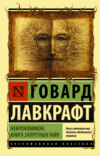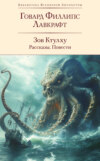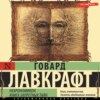Длительность книги 1 ч. 34 мин.
2020 год
Through the Gates of the Silver Key
Начислим
+1
Покупайте книги и получайте бонусы в Литрес, Читай-городе и Буквоеде.
Участвовать в бонусной программе
О книге
"Through the Gates of the Silver Key" is a short story co-written by American writers H. P. Lovecraft and E. Hoffmann Price between October 1932 and April 1933. A sequel to Lovecraft's «The Silver Key», and part of a sequence of stories focusing on Randolph Carter, it was first published in the July 1934 issue of Weird Tales.
At a gathering to decide the fate of Randolph Carter's estate (which has been held in trust since his disappearance) the mysterious Swami Chandraputra, who wears curious mittens and enveloping robes, tells Carter's acquaintances of his ultimate fate. He explains that the key took Carter to a type of higher dimension. There, Carter, on an ill-defined mission (or out of sheer curiosity), travelled strange sections of the cosmos by first meeting with 'Umr at-Tawil, a dangerous being warned of in the Necronomicon, saying those who deal with it never return. 'Umr at-Tawil offers Carter a chance to plunge deeper into the cosmos; Carter thus perceives the true nature of the universe before passing through the «Ultimate Gate.»
Famous works of the author Howard Phillips Lovecraft: At the Mountains of Madness, The Dreams in the Witch House, The Horror at Red Hook, The Shadow Out of Time, The Shadows over Innsmouth, The Alchemist, Reanimator, Ex Oblivione, Azathoth, The Call of Cthulhu, The Cats of Ulthar, The Dunwich Horror, The Doom that Came to Sarnath, The Festival, The Silver Key, The Other Gods, The Outsider, The Temple, The Picture in the House, The Shunned House, The Terrible Old Man, The Tomb, Dagon, From Beyond, What the Moon Brings.
Время неподвижно, и, соответственно, не имеет ни начала, ни конца. Представление о времени как о чем-то движущемся и вызывающем перемены есть иллюзия. Да и само время, в сущности, является иллюзией. Прошлое, настоящее и будущее существует лишь в представлениях обитателей низших миров с малыми числом измерений. Люди связывают движение времени с происходящими переменами, каковые также суть иллюзия, ибо все что было, есть и будет, существует одновременно.
Ни смерть, ни душевные или физические муки не могут породить такого отчаяния, какое вызывает утрата собственной индивидуальности. Обратившись в ничто, мы обретаем забвение; но осознавать себя существующим, одновременно зная, что ты лишён собственного «Я» и более не являешься единственным и неповторимым, чем-то отличным от всех других, — вот он, истинный апофеоз ужаса.
То, что они считают сущностью и реальностью, на самом деле есть иллюзия и призрак, а то, что на земле зовётся иллюзией и призраком, - это сущность и реальность.
Ни смерть, ни удары судьбы, ни муки не способны сравниться с отчаянием от утраты собственного "я". Слияние с пустотой дарует покой забвенья, но сознавать, что ты существуешь, но больше не являешься единственным, отличным от других это истинная трагедия и ужас, которым невозможно подыскать определение.

